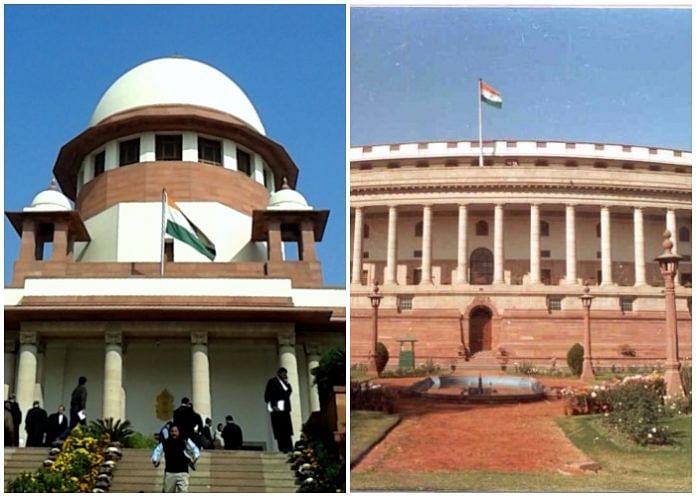Rooting privacy in dignity ensures that even constitutional amendments to the right can be struck down
The Supreme Court’s decision in Justice Puttaswamy v. Union of India finally lays to rest all doubts about privacy’s claim to the pantheon of fundamental rights. A clever-by-half submission raised by the Union to nip the constitutional challenge to Aadhaar in the bud resulted in today’s nine-judge verdict.
This verdict will have potential ramifications on the legal framework, and perhaps even technology architecture, supporting the scheme’s biometric identification and authentication solutions, when the five-judge bench apprised of the matter takes it up for final hearing.
The Supreme Court’s unanimous voice, enshrining the right to privacy as a fundamental right, renews faith in our organic Constitution and its ability to withstand the onslaught of politics and technology. Discarding judicial opinions — or more fittingly passing observations — of a bygone era such as in MP Sharma (1954) and Kharak Singh (1962), when technological pervasiveness in our lives was a non-reality, the Court has ushered in the possibility of important checks on state surveillance as well as private action.
Refreshingly, at least five out of nine judges – four speaking through Justice Chandrachud, and Justice Kaul – have also chronicled in fairly detailed ways, the impact of technology on the private domain, and emphasised the need to closely evaluate data practices.
But one must exercise caution when analysing newly spelt-out rights, as infancy and indeterminacy often waltz together. The Court, since its earlier verdict in Maneka Gandhi’s case (1978), has attracted much criticism for expanding the enumerated guarantees of life and personal liberty to include access to clean environment, medical attention, and other welfare claims.
For this reason, we must carefully parse out four dimensions of this “right to privacy”, a weighty branch of the much bigger oak of unenumerated rights that emerge from this verdict. These are: the foundations of the right, its analytic content, limitations therein, and implications for impending State and private action.
All five judicial opinions take the view that human dignity is an essential aspect of several rights contained in Part III, being the fundamental rights chapter, and that privacy is integral to a life with dignity. Human dignity, in effect, provides the foundation for the right to privacy. There could be no stronger foundation conceivable, because personal life, liberty, and the freedoms guaranteed under Article 19, combine to form a comprehensive code that, in turn, is recognised as part of the basic structure of the Constitution.
By rooting privacy within the notion of human dignity, today’s verdict ensures that even constitutional amendments infringing upon the right to privacy could be struck down as violative of the basic structure of the Constitution. As Justice Chandrachud observes in para 107, “to live is to live with dignity”, and “dignity is the core which unites the fundamental rights because the fundamental rights seek to achieve for each individual the dignity of existence.”
The opinions have gone further to delineate the contours of the privacy right.
Justice Chandrachud, in para 142, identifies spatial control, decisional autonomy, and informational control, as three important dimensions of privacy. The first dimension protects against State invasion into both physical spaces and the human body, including acts of confinement. The second protects an individual’s autonomy over fundamental personal choices. The third empowers the individual to retain personal control over private information.
Justice Nariman correlates each of these dimensions to fundamental rights already present in Part III. The verdict, therefore, provides sufficient analytic content to the privacy right, which future judges can build upon on case-to-case basis.
The verdict also offers a fair degree of clarity on the limitations to the right. Justice Chandrachud observes that crime prevention and investigation, revenue protection and utilisation, and the spread of innovation and knowledge through legitimately deployed information sharing, can qualify as acceptable exceptions, in addition to national security.
However, the means to achieve such legitimate aims must still be proportionate to the object sought to be fulfilled by the law. As Justice Chelameswar rightly observes, the same just, fair, and reasonable standard as applicable to inroads upon personal liberty, and even a higher compelling state interest standard in appropriate privacy claims, would apply when evaluating the constitutionality of specific state action.
In addition to its obvious implications for Aadhaar, the privacy right expounded today will equally shape the Home Ministry’s Crime and Criminal Tracking Network and Systems to track criminal antecedents and build a more trusting society through the sharing of such information, the newly proposed National e-Health Authority, and the DNA Fingerprinting Bill. Moreover, post-Vishaka (1997) and the sexual harassment codes stemming from them, horizontal application of rights and imposition of duties on private actors transcends the realm of theoretical possibility to the domain of legal actuality.
Recognition of the right to privacy opens up a whole new world of legal possibilities, whether they be judicial directives to the state to enforce citizen privacy against technology giants, or even direct challenges against privacy policies of such companies. This is particularly so because the Court’s line of reasoning not only places privacy in our Constitution, but also technology under the judicial scanner.
Ananth Padmanabhan is a fellow at Carnegie India, working at the intersection of technology, law, and regulation.



